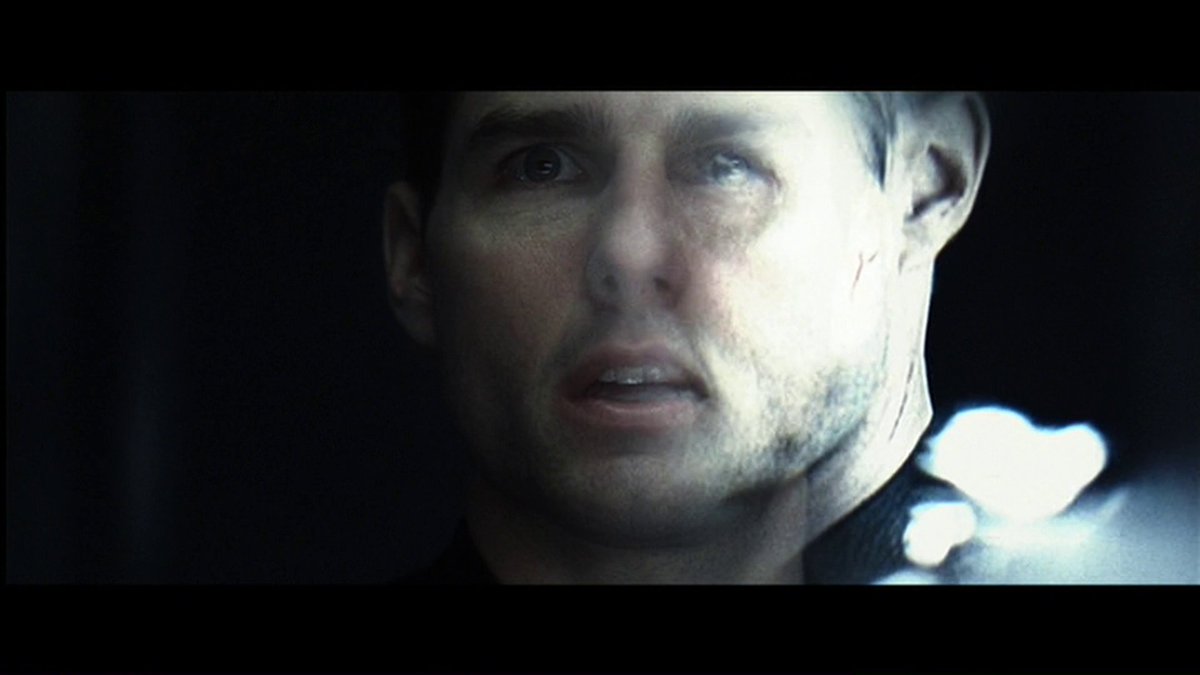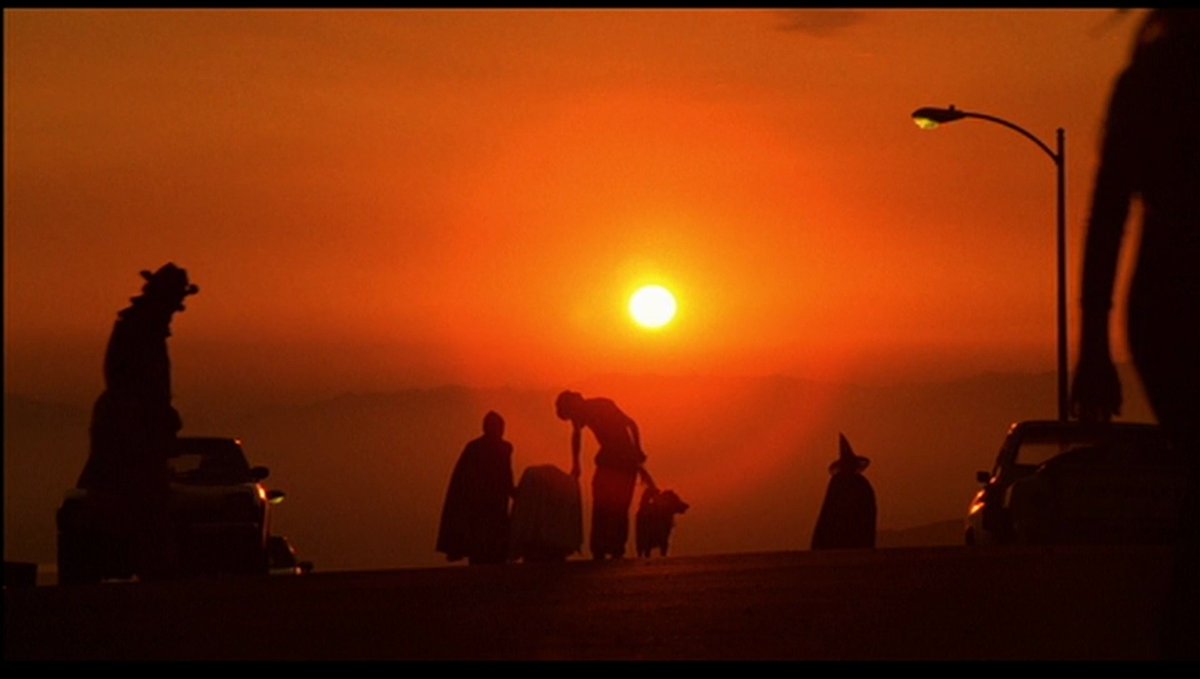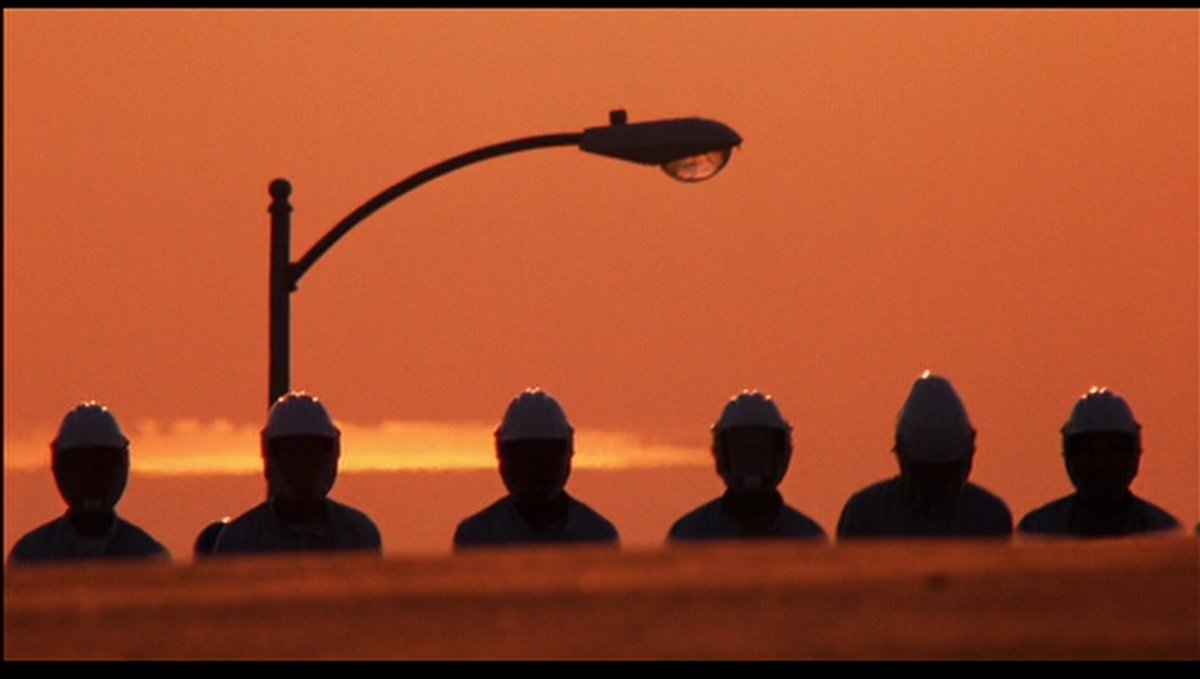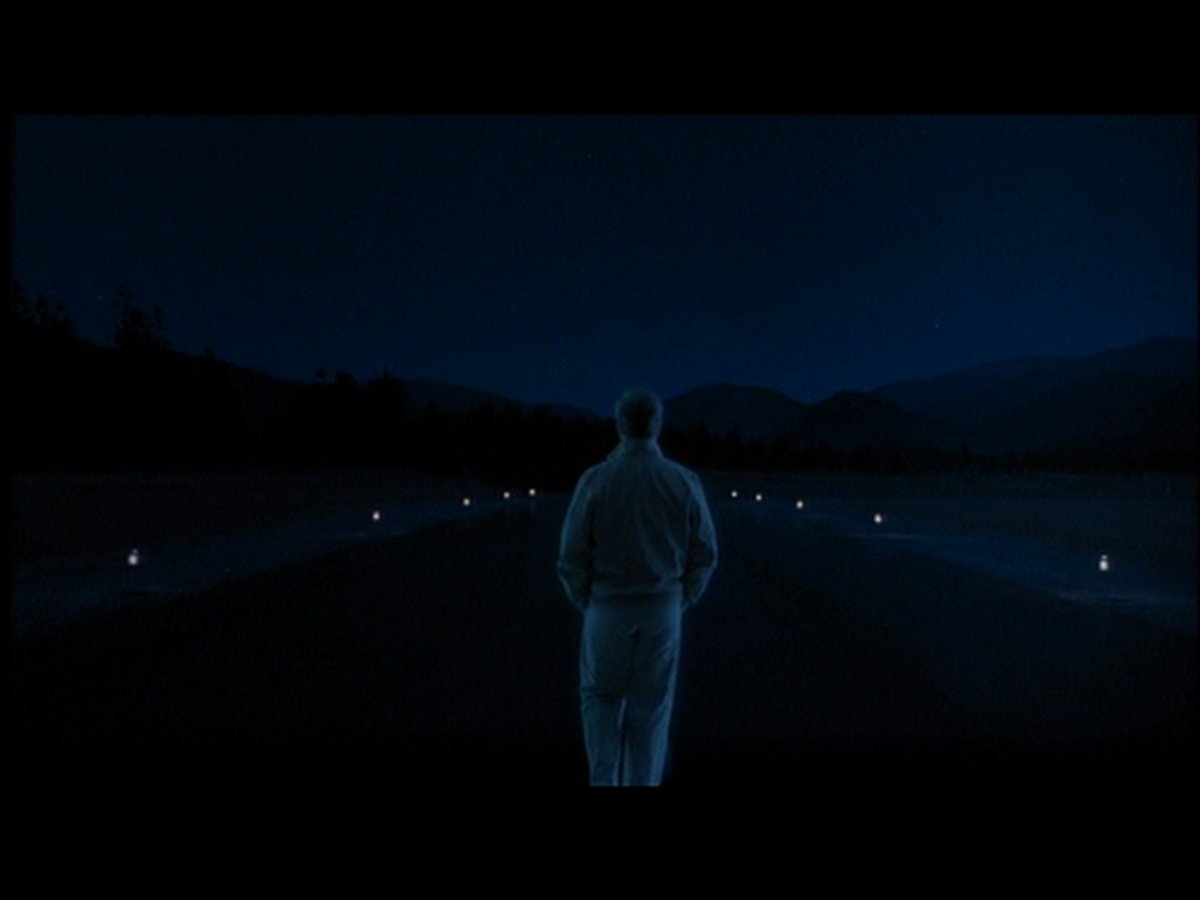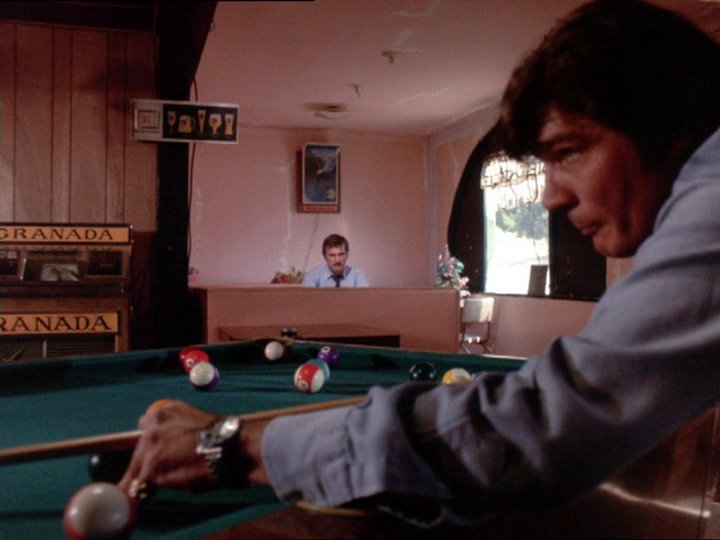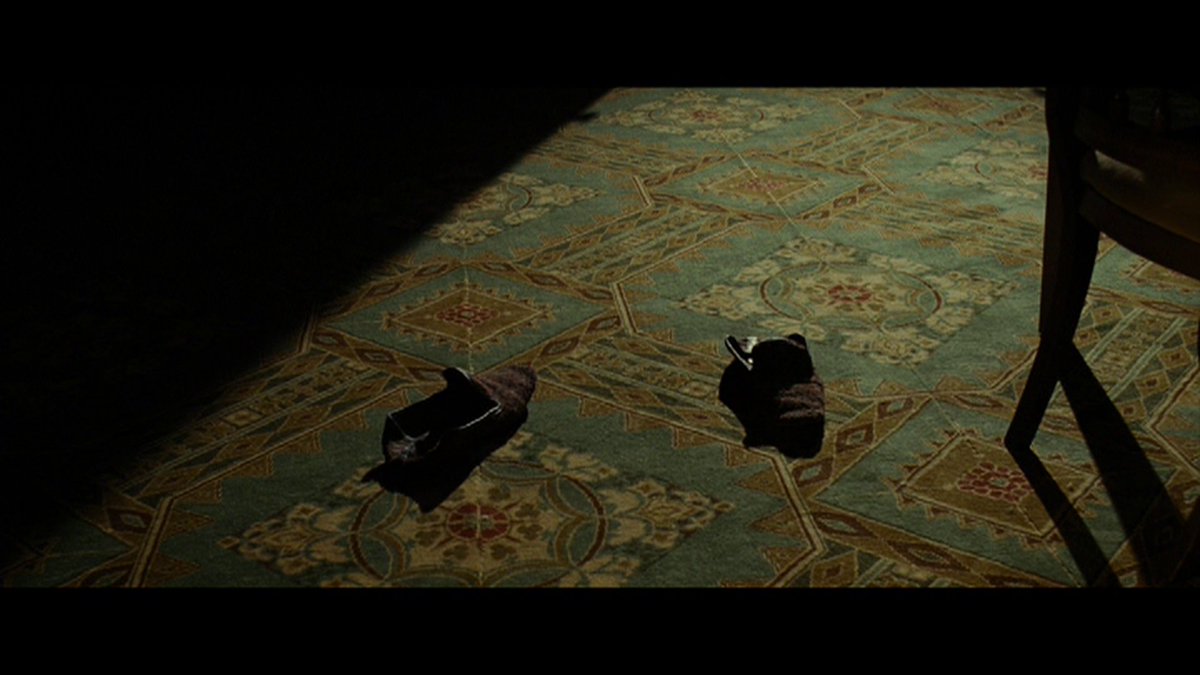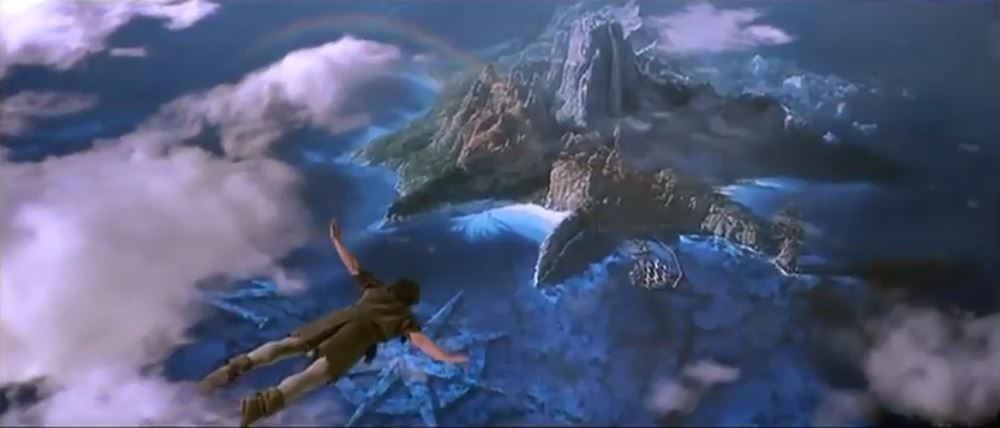In celebration of #ThePost& #39;s release, this thread will list some of Spielberg& #39;s greatest-ever (in my opinion) shots, and why I love them. New shots updated each day until Friday.
#SpielbergShot 1. A study in power. Quint stands at the centre of the frame, with the railing drawing our eye towards him. His power is something to aspire to, but light and shadow make the shot unsettling. Quint& #39;s the devil, tempting Brody and Hooper to his alpha masculinity.
#SpielbergShot 2. A similar shot for another study in alpha male power, this time from 1941. Spielberg& #39;s distrust of American authority can also be seen here as he links Stretch& #39;s unceasing pursuit of Betty to the violence of war.
#SpielbergShot 3. Catch Me If You Can. An example of modern Spielberg& #39;s use of light. What once signified wonder, here shines stark reality on Frank& #39;s mother and her affair. The blocking further establishes the disconnect and can even be taken as a subversion of E.T.& #39;s poster.
#SpielbergShot 4. An example of Spielberg& #39;s use of Tom Cruise in Minority Report. This shot subverts Cruise& #39;s star image, turning him into something monstrous and deformed. Also, it comments on how Pre-Crime has distorted the character& #39;s perception and ability to see clearly.
#SpielbergShot 5. An example of Spielberg& #39;s visual economy and use of reflection. By reflecting Sakharine in Haddock& #39;s bottle, Spielberg blends the Captain& #39;s oppressors in one simple image that taunts and tempts him, but also underlines his victory. Haddock has trapped Sakharine.
#SpielbergShot 6. Spielberg employs rhyming shots in E.T., most notably during the flying bike sequences. He also does it here, playing on the corruption of childhood innocence by echoing the scenes set at Halloween when the government agents descend on Elliott& #39;s house.
#SpielbergShot 7. Until this point in the Rex attack sequence, Spielberg had kept his camera largely within the safety of the cars. Here, as the Rex appears, he pulls out from the window and through the sunroof. The safety barrier is removed and the threat is terrifyingly real.
#SpielbergShot 8. An excellent example of Spielberg& #39;s changing use of the colour blue. In ET, blue brought wonder and magic; at the end of Always, however, it marks Pete& #39;s death. In the context of Spielberg& #39;s career, this suggests a man anxious to move on to more grounded fare.
#SpielbergShot 9. Spielberg is on poetic form in this moment from Empire of the Sun. The collapse of Jim& #39;s fantasies is underlined by the pilot parachuting down to earth. In the chaos of war, even the wonder of flight can& #39;t save us.
#SpielbergShot 10. The Terminal is a lighthearted film about how casually cruel we can be to one another. This shot perfectly captures that, as the doors not only block our view of Viktor but distort him. The unwillingness of those in the airport to help has dehumanised our hero.
#SpielbergShot 11. Eyes are the windows to the soul, and Spielberg often uses them in that way. You can be sure you& #39;re seeing a bad, or morally ambiguous, character in a Spielberg film when their eyes are blocked or distorted. Mola Ram in Temple of Doom is a striking example.
#SpielbergShot 12. The shot that launched a subgenre. The wonder, mystery and fear Amblin films imbue suburbia with are all present in this moment from E.T.. We worry for E.T. in this big new world, but feel drawn to its coziness and warmth.
#SpielbergShot 13. There& #39;s so much going in this moment from Duel. From the juxtaposed scale to the use of a man in the foreground to cut across the frame, everything is designed to weaken David Mann. It& #39;s pure visual storytelling, and a hint of things to come from Mr. Spielberg.
#SpielbergShot 14. A simple but effective moment from Lincoln as Spielberg humanises the great President through his slippers. It& #39;s the kind of tiny observational detail Spielberg used in the likes of CE3K and ET. Applied here, it adds intimacy to history.
#SpielbergShot 15. Spielberg is a master of studying faces, and few examples are better than Schindler& #39;s introduction. Aided by a subtle performance from Liam Neeson, Spielberg slowly draws us into Schindler& #39;s ambiguous world and dares us to like him.
The subtle breaking of the fourth wall is what makes that shot. Schindler is working the room, but Spielberg is working the audience. It& #39;s unsettling and manipulative. But it& #39;s meant to be.
#SpielbergShot 16. A haunting shot from War Horse that captures the fleeting nature of life. The use of the windmill to snuff the men out only makes the moment harder to watch as its gentle turning juxtaposes starkly with the violence of the firing squad.
#SpielbergShot 17. An inversion of the Spielberg Face designed not to generate wonder, but fear. The shot also works to underline how frail and vulnerable humanity in the face of the Tripods.
#SpielbergShot 18. Flawed though it may be, Hook makes smart use of its artificiality to comment on reality and fantasy. This shot is a wonderful example, and one of the great moments of euphoria in Spielberg& #39;s film-making.
#SpielbergShot 19. Jim returns home to find an empty house and signs of a struggle etched into talcum powder that& #39;s been spilled on the floor. Echoing the A-Bomb blast we see later in the film, this moment from Empire of the Sun captures the film& #39;s subtle violence perfectly.
#SpielbergShot 20. The last one, and one that captures a vital part of Spielberg& #39;s cinema: communication. No matter who we are, no matter what species we are, no matter what planet we& #39;re from, Spielberg believes we can communicate. This is his most beautiful rendering of that.
I hope this collection of tweets hasn& #39;t been too annoying/arduous. There are plenty more thinky-thoughts about y& #39;boy Stevie on my site, of course. I& #39;m off to watch the presses roll. https://www.fromdirectorstevenspielberg.com..."> https://www.fromdirectorstevenspielberg.com...

 Read on Twitter
Read on Twitter
